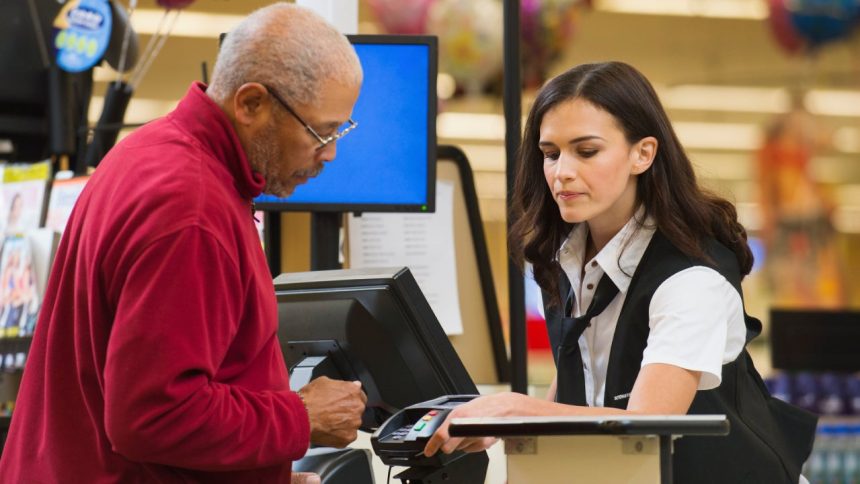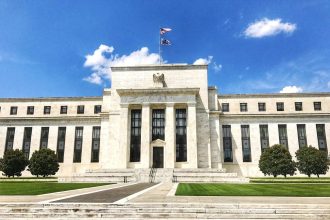Erik Isakson/Getty Images
Money orders can be a convenient way to pay for something with secure, guaranteed funds. They’re popular as a way to pay bills like rent or to send money to friends and family.
You can get a money order from many places, including stores dedicated to financial services, your bank or credit union, grocery stores and the post office. But they’re generally only for purchases of $1,000 or less.
Your bank or credit union
If you have an account at a local bank or credit union, the best place for you to get a money order is likely with your financial institution. Most institutions will charge a small fee to sell you a money order. However, you may be able to convince the bank to waive the fee depending on your relationship with the institution.
Getting your money order from the bank means that your bank can deduct the funds directly from your account. You don’t have to carry large sums of cash to another location to purchase the money order.
Retail stores
Retail stores are also a popular place to purchase money orders. There are stores dedicated to offering financial services, like check cashing and money orders, that you can visit. For example, Western Union is a well-known company that offers money orders and other financial services.
Many grocery stores, such as Kroger, allow customers to buy money orders. Typically, you’ll have to visit a grocery store’s customer service counter to purchase one. Anthony Kirlew, a financial coach at Fiscally Sound, says that grocery stores are one of the best places to get money orders.
“Most — if not all — require you to pay cash for them so you can do a cash back transaction at the window, which saves time and keeps the transaction secure,” Kirlew says. “They also offer very reasonable pricing.”
Big box stores like Walmart also frequently sell money orders. Again, you’ll probably have to visit the customer service desk to buy one.
You can also buy a money order at convenience stores such as 7-Eleven, which accepts cash or debit card payments for money orders.
Post office
The United States Postal Service has a long history of offering financial services to Americans. Between 1911 and 1967, the U.S. Postal Savings System helped Americans save money and, at its peak, held almost $3.4 billion in deposits.
Today, USPS money orders are popular for their low cost and their reputation for safety.
However, not all post offices sell money orders anymore. You’ll have to check with your local post office to make sure it sells money orders. Plus, anyone who has visited a post office knows that lines can sometimes get long, so you might have to wait to buy your money order.
How much does it cost to buy a money order?
The price of a money order varies based on where you’re buying the money order and the amount of the money order. Generally, larger money orders will cost more.
For example, the USPS charges:
- $2.10 for money orders ranging from $0.01 to $500
- $3 for money orders between $500.01 and $1,000
At Walmart, you will pay no more than $1 for your money order.
At Wells Fargo, you will pay $5 to purchase a money order in any amount up to $1,000. The bank waives the fee for some accounts.
Why use a money order?
There are several reasons why using a money order can be a good idea.
- Money orders are guaranteed. This means that unlike a check, you know an authentic money order won’t bounce — like a personal check could.
- Keeps your financial information private. Money orders are also a good way to keep your financial information private. If you want to send money to a friend or family member, you can use a money order so you don’t have to provide banking details such as account numbers or routing numbers.“You can send money through money orders securely across the country without sharing your bank details with anyone,” says Anika Jindal, a financial blogger. “Money orders are made to the order of a particular person so this reduces the chances of someone else cashing them out.”
- No bank account is required. Even if you don’t have a bank account, you can still use a money order to send money to someone.
Alternatives to money orders
Various payment options can be used as alternatives to money orders, some of which are quicker and don’t charge fees.
Peer-to-peer payments: Sending money electronically is a convenient way to transfer money from your checking or savings account directly to that of a friend or relative. This is often free, although some providers charge a fee for faster transfer times. Some popular peer-to-peer services include:
Personal checks: Writing a check is a simple way to make a payment from your checking account. Unlike the typical money order, you won’t be limited on how much the check is for, as long as you have the money in your checking account to cover it.
Cashier’s check: Issued on your behalf by your bank or credit union, a cashier’s check is a way you can make a payment that’s backed by the bank’s funds. Banks typically charge $8 to $15 to issue a cashier’s check.
— Bankrate’s Matthew Goldberg and Karen Bennett contributed to updates of this story.
Read the full article here
















